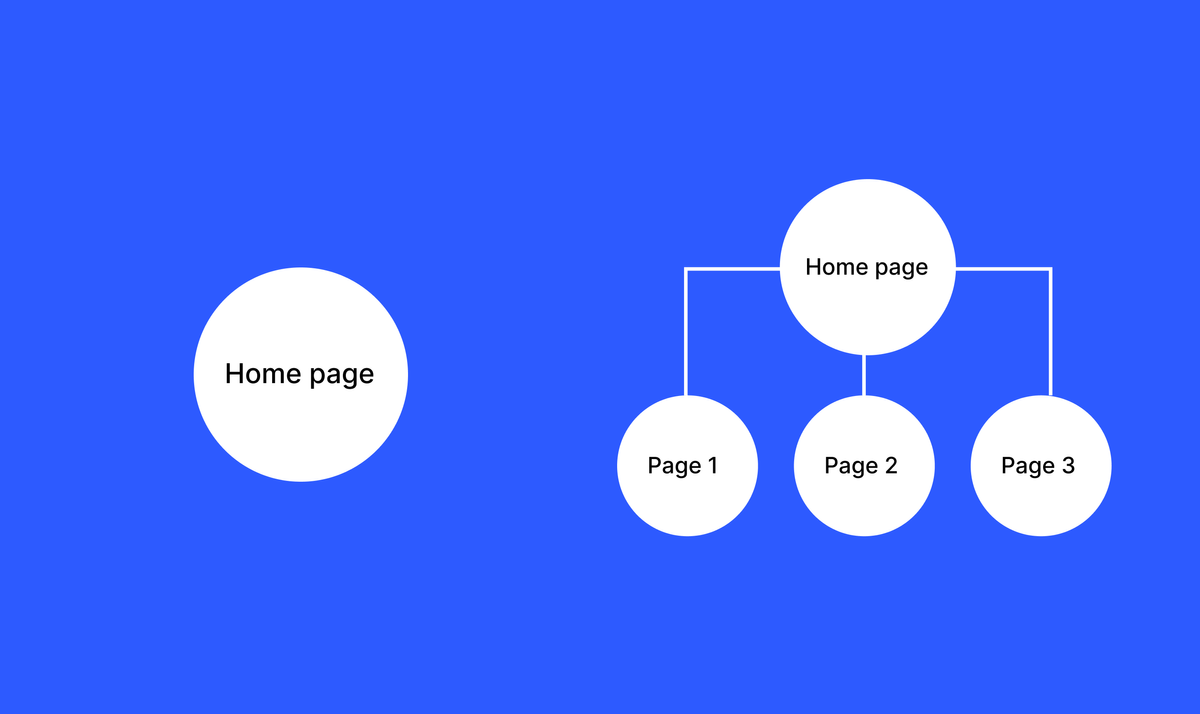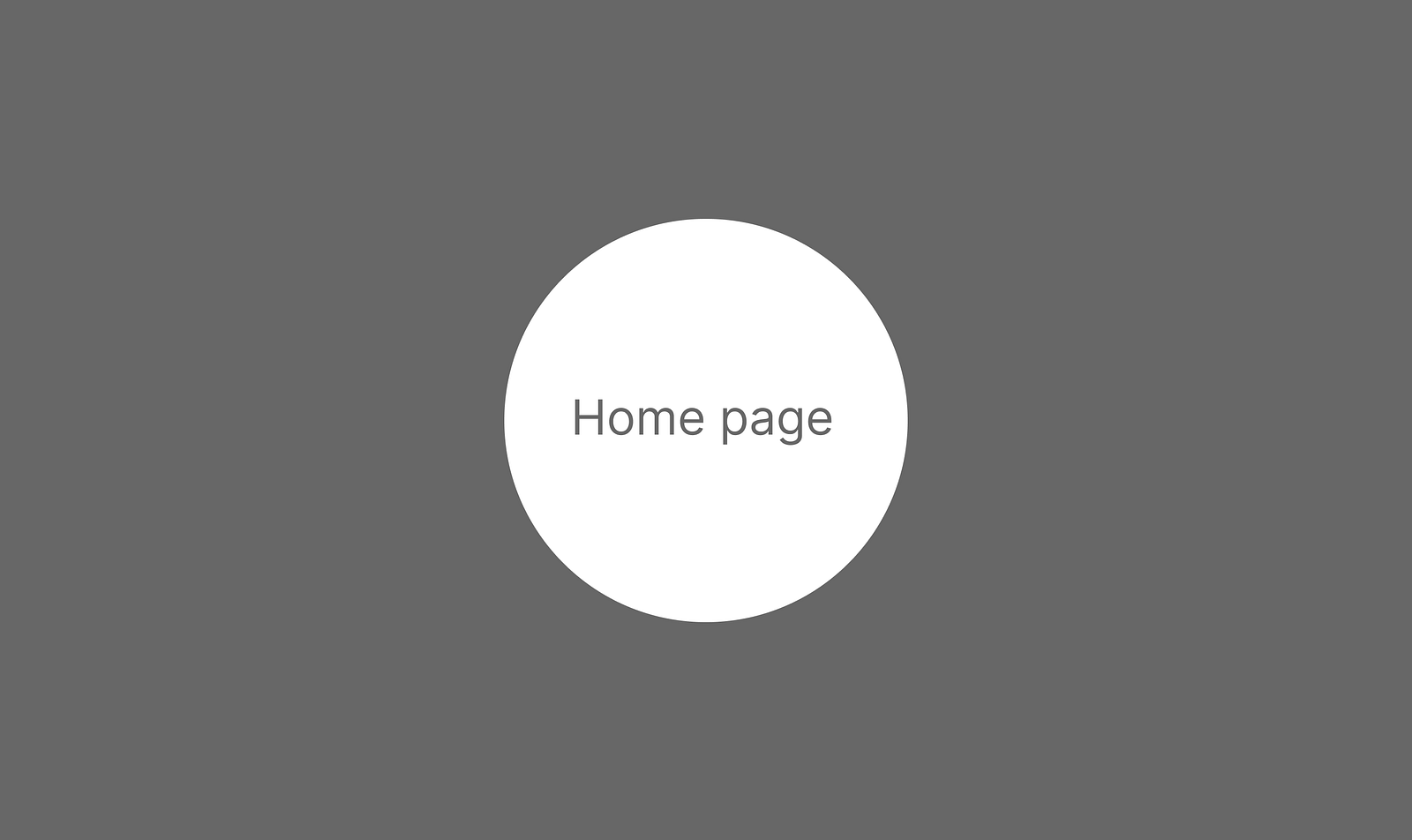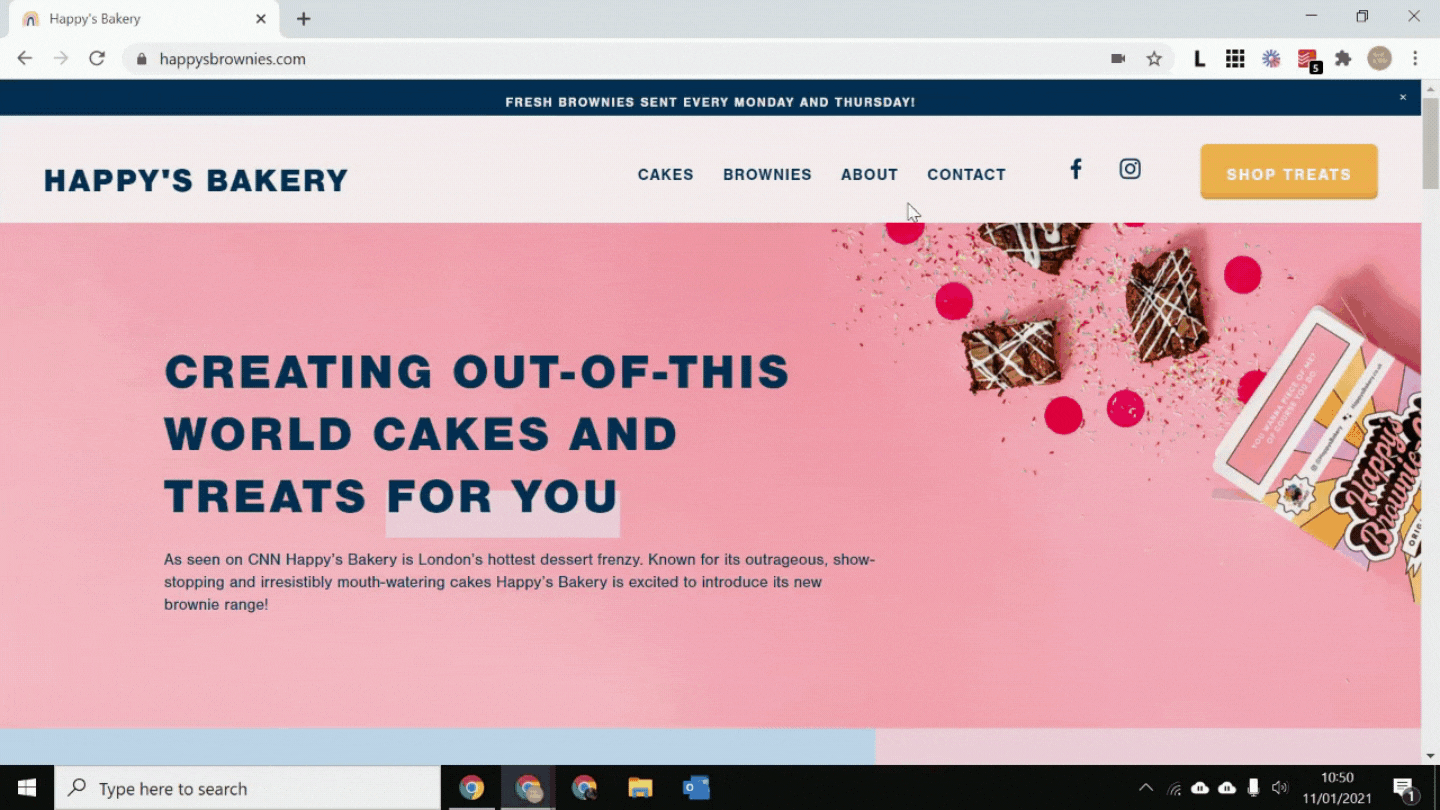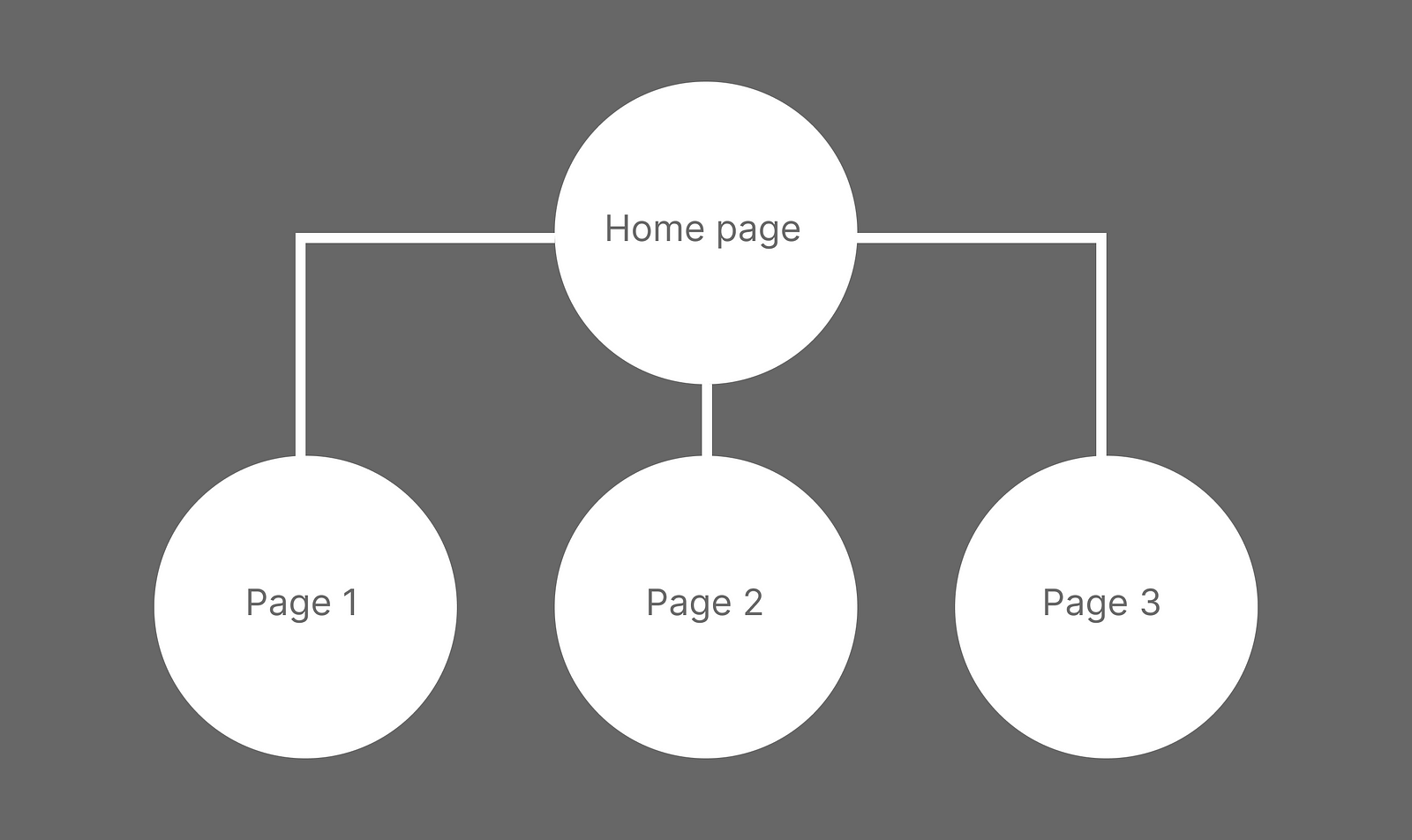One-page vs. Multi-page website: Which one to choose?

“Should I go for a one-pager or multi-page website?” is a popular question among web designers. One-pager is a very common type of website that suits the needs of many website owners. But to make informed decisions, it’s essential to understand the difference between one-pager and multi-pager. Each type of website has its benefits and downsides; in this article, we will review both.
One-page website
As the name suggests, a one-page website is a website that has only one page. This page contains all content that a business is offering to its users.

Benefits of a single-page website
- Easy to navigate and consume content. One-pager is basically a page with a long scroll. This type of website creates a linear user journey — all users have to do to consume content is scroll the page. Scrolling is more comfortable than clicking, so we can expect a higher level of user engagement.
“Scrolling is a continuation. Clicking is a decision.” (Joshua Porter)

- Easy to organize information according to the user and business goals. The visual hierarchy of the page can be designed according to the user’s goals (what the user wants to achieve) and business needs (a page design can motivate users to convert). For example, once the user scrolls to a specific part of the page, they will have all the information required to make a decision, and you can offer a call to action button so they can convert.
- All information is available on a single page. Users can find everything they are looking for on a single page, so they don’t worry about missing something. To simplify the user task, you can offer anchor links that help users jump to a particular section on a page.

Downsides of single-page website
- Attempt to achieve multiple goals on a single page. One of the goals that web designers have is to make each page focused. Ideally, each page should help you achieve one particular goal. When you create a one-pager, you try to accomplish a few things simultaneously, making the design less focused.
- Not scalable solution. If you have a lot of content that you need to show on your website, a one-pager might not be the best solution for you. That’s because you don’t want to overwhelm users with too much information. For example, if you offer a range of X products, and each has its own lengthy description, it’s better to go for a multi-pager.
- Harder to analyze data. When you have only one page, it can be hard to analyze user behavior (i.e., understand what content is more interesting to your users or why users behave in specific ways). For example, it can be harder to understand why people abandon your website — is it because the message in the hero section wasn’t clear enough, or they simply didn’t scroll to a particular section?
- Bad for search engine optimization. When you do SEO, you optimize pages to particular keywords. But since you have only one page, you can choose only one set of keywords (one primary and a couple of secondary keywords) and optimize the page accordingly to your selection. It is impossible to optimize the page for many different primary keywords.
Multi-page website
The multi-page website consists of many pages linked together. This type of website typically has a hierarchical structure.

Benefits of a multi-page website
- Good scalability. You can have as many pages as you want. For example, you can create a separate page for each product offer. If you have the right hierarchical structure for your website, your design will scale well.
- Easier to analyze data. When you have a range of products that you showcase on your website, and each product has its own page, you can easily see which product is more popular simply by checking the number of visitors that each page has.
- Good for SEO. When you have multiple pages, different pages can rank for different keywords. For example, when you have a separate page for each product you offer, you can optimize each page for different keywords. As a result, when people google your product, they will see a link to a specific page with your product rather than a home page with a bunch of other content.
Downsides of multi-pager
- Each page can potentially be an entry point to your website. You can optimize your home page to communicate what your business is doing, but when people google your business, they might not necessarily land on your home page. They might land on any page of your website, and ensuring that all pages communicate the primary message is vital. Users should understand what your business is offering, but it can be hard to convey the message when users land on a blog post on your website.
- Navigation can be confusing. You need to ensure that the navigation you use on your website is crystal clear to your users. Again, the more pages you have and the more complex the structure of your website is, the harder it will be to design a solid navigation system. It is vital to create the navigation according to the mental models that your users have.
- Harder to manage content. Generally, the more pages you have, the harder it will be to maintain content on the pages. You need to ensure that all content is up to date, but it’s relatively easy to miss something when you have a lot of different pages.